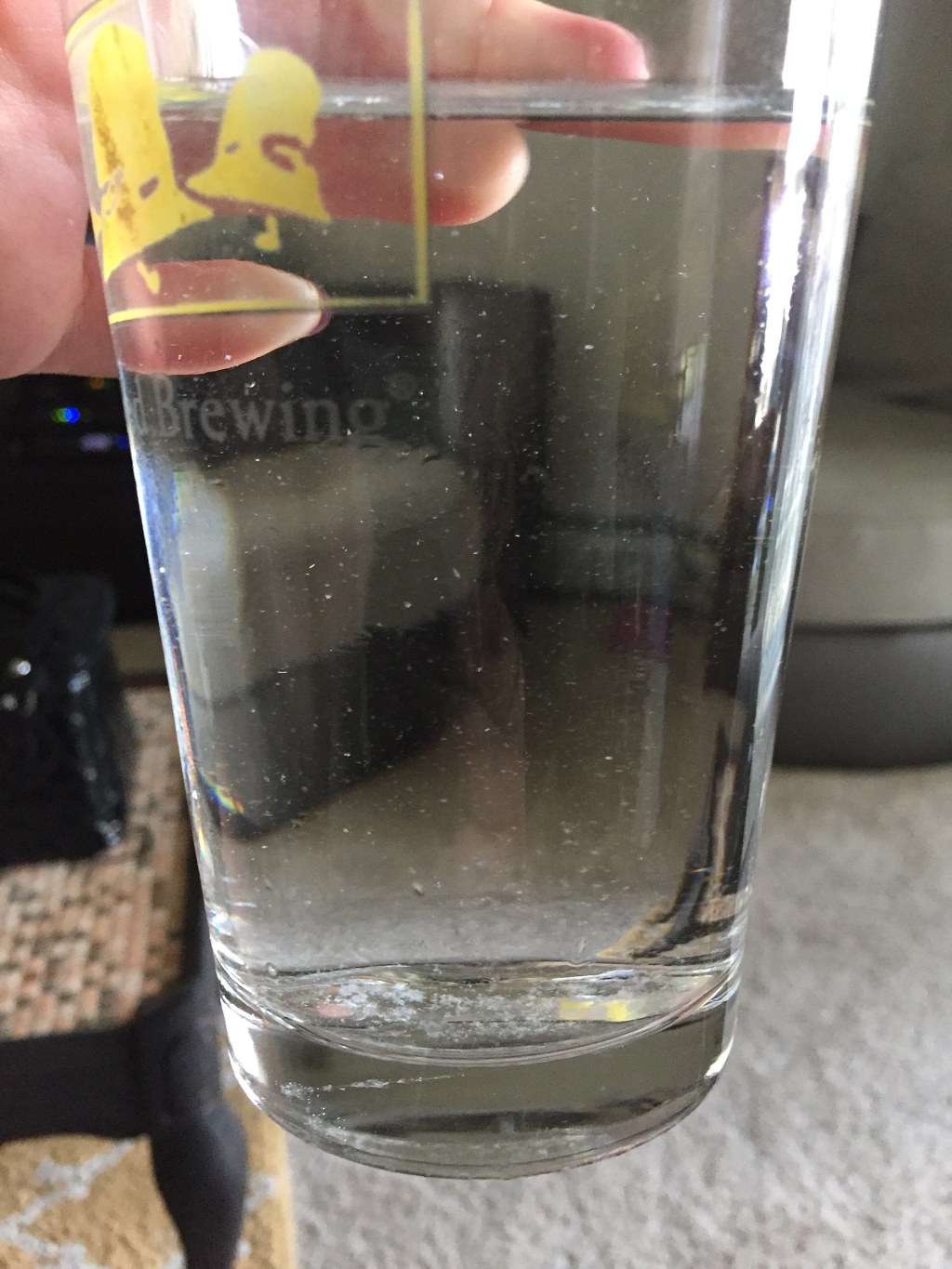Mysterious White Stuff In Water Bottle: Uncover The Truth And Take Action Now!
White Stuff in Water Bottle: Causes, Effects, and Solutions
Introduction
Welcome, Smart Peoples, to our informative article on the issue of white stuff in water bottles. In this article, we will explore the causes behind this phenomenon, its potential effects on human health, and practical solutions to mitigate its occurrence. By understanding this topic, you will be equipped with valuable knowledge to ensure the safety and quality of your drinking water.
3 Picture Gallery: Mysterious White Stuff In Water Bottle: Uncover The Truth And Take Action Now!



Water is essential for our survival and staying hydrated is crucial for maintaining optimal health. However, when we notice white substances in our water bottles, it raises concerns about the cleanliness and safety of the water we consume. Let’s delve deeper into this issue and discover the truth behind the white stuff in water bottles.
What Causes White Stuff in Water Bottles?

Image Source: tasteofhome.com
The presence of white substances in water bottles can be attributed to various factors. One common cause is the accumulation of mineral deposits, such as calcium and magnesium, which are naturally present in water. These minerals can form white or chalky residues when the water evaporates or when the bottle isn’t cleaned thoroughly.
Additionally, if the water source contains high levels of dissolved minerals, it can lead to the formation of white stuff in the bottle. Another possible cause is the growth of bacteria or fungi, which can thrive in moist environments and leave behind white or slimy residues.

Image Source: townsquare.media
Furthermore, certain environmental factors, such as exposure to sunlight or extreme temperatures, can contribute to the development of white substances in water bottles. Understanding the causes is crucial in finding appropriate solutions to address this issue.
Who Is Affected by White Stuff in Water Bottles?
The issue of white stuff in water bottles can affect anyone who uses reusable water bottles regularly. Whether you are an athlete, a student, an office worker, or a traveler, it is important to be aware of this problem and take necessary precautions to ensure the cleanliness of your water bottles.

Image Source: redd.it
Parents who pack water bottles for their children should also pay attention to this issue, as it directly impacts the health and well-being of their little ones. By understanding who is affected, we can take collective responsibility to prevent the occurrence of white stuff in water bottles.
When Does White Stuff Appear in Water Bottles?
The appearance of white substances in water bottles can occur at any time, depending on various factors. It may become noticeable after leaving the water bottle unused for an extended period. Additionally, if the water inside the bottle is exposed to sunlight or extreme temperatures, it can accelerate the formation of white deposits.
Regular neglect of proper cleaning and maintenance of water bottles can also lead to the accumulation of white stuff over time. By understanding when this issue arises, we can adopt preventive measures to maintain the quality of our drinking water.
Where Can White Stuff Be Found in Water Bottles?
The white stuff can be found in different areas of water bottles. It may manifest as a thin film on the inner walls, a layer on the bottom, or even floating particles in the water itself. In some cases, the white substances may adhere to the cap or nozzle of the bottle, making it unappealing and unsanitary.
Given the various possible locations, it is essential to thoroughly inspect and clean all parts of the water bottle to ensure its cleanliness. By knowing where the white stuff can be found, we can focus our cleaning efforts accordingly.
Why Should We Be Concerned about White Stuff in Water Bottles?
The presence of white substances in water bottles raises concerns about the quality and safety of the water we consume. If left unaddressed, these substances can affect the taste, odor, and overall quality of the water, making it less enjoyable to drink.
Moreover, the accumulation of minerals or the growth of bacteria and fungi can pose potential health risks. Consuming water contaminated with these substances may lead to gastrointestinal issues, allergic reactions, or even infections. Therefore, it is crucial to be aware of the implications and take necessary actions to prevent any adverse effects.
How Can We Prevent and Remove White Stuff in Water Bottles?
Preventing and removing white stuff in water bottles requires a proactive approach. Here are some effective measures:
Regular Cleaning: Clean your water bottle thoroughly after each use, using hot water and mild soap. Pay extra attention to hard-to-reach areas, such as the cap and nozzle, to ensure the removal of any potential residues.
Vinegar Solution: Periodically soak your water bottle in a solution of equal parts white vinegar and water. This helps dissolve mineral deposits and eliminate any bacterial or fungal growth. Remember to rinse the bottle thoroughly afterward.
Brush Cleaning: Utilize a bottle brush or a long-handled, narrow brush to scrub the interior of the water bottle, especially if it has narrow openings. This ensures a deeper clean and removes any stubborn residues.
Drying and Storage: Allow your water bottle to dry completely before storing it. Moisture promotes the growth of bacteria and fungi, leading to the formation of white stuff. Store your bottle in a clean and dry environment to minimize the risk.
Filtered Water: Consider using filtered water to fill your water bottle. This helps reduce the presence of minerals and impurities, minimizing the chances of white stuff formation.
Pros and Cons of Using Water Bottles
Using water bottles has become a popular choice for staying hydrated on the go. However, it is essential to weigh the pros and cons:
Advantages:
Portability: Water bottles allow easy access to clean drinking water wherever you go.
Sustainability: Reusable water bottles help reduce plastic waste and contribute to a greener environment.
Cost-effective: Investing in a water bottle can save money in the long run compared to purchasing bottled water.
Temperature Control: Insulated water bottles can keep beverages hot or cold for extended periods.
Customization: Water bottles come in various designs and sizes, allowing personalization and catering to individual preferences.
Disadvantages:
Maintenance: Water bottles require regular cleaning and maintenance to prevent any health risks.
Contamination Risk: Improper cleaning or usage can lead to the growth of bacteria or the accumulation of white substances.
Initial Investment: Quality water bottles may have a higher upfront cost compared to single-use plastic bottles.
Accessibility: In certain situations, accessing clean water to refill the bottle may be challenging.
Breakability: Glass or fragile water bottles may be prone to breakage and may not be suitable for certain activities.
Frequently Asked Questions (FAQs)
1. Can white stuff in water bottles be harmful?
No, the white stuff is typically harmless mineral deposits or bacterial/fungal residues. However, it is crucial to clean your water bottle regularly to prevent any potential health risks.
2. How often should I clean my water bottle?
It is recommended to clean your water bottle after each use. This helps maintain hygiene and prevents the accumulation of white substances or harmful bacteria.
3. Can I use bleach to clean my water bottle?
While bleach can effectively disinfect water bottles, it is essential to rinse the bottle thoroughly afterward to remove any traces of bleach. Alternatively, consider using mild soap or a vinegar solution for regular cleaning.
4. Are dishwasher-safe water bottles easier to clean?
Dishwasher-safe water bottles can be more convenient for cleaning. However, it is still important to check the manufacturer’s instructions and ensure all parts of the bottle are thoroughly cleaned and dried.
5. How can I remove stubborn white deposits from my water bottle?
If regular cleaning methods are ineffective, you can try using a mixture of baking soda and water as a scrub. This can help remove stubborn white deposits, but be sure to rinse the bottle thoroughly afterward.
Conclusion
In conclusion, the presence of white stuff in water bottles can be a cause of concern, but with proper understanding and preventive measures, it can be effectively addressed. By regularly cleaning your water bottle, using vinegar solutions, and adopting good hygiene practices, you can ensure the safety and quality of the water you consume.
Remember, staying hydrated is essential for your well-being, and by taking care of your water bottle, you are taking care of yourself. Embrace the advantages of using reusable water bottles, but also be mindful of the potential disadvantages. Let’s prioritize our health and the environment by making informed choices and practicing good bottle hygiene.
Final Remarks
Smart Peoples, we hope this comprehensive article has provided valuable insights into the issue of white stuff in water bottles. Remember, knowledge is power, and by being aware of this topic, you can make informed decisions to safeguard your health and well-being.
Disclaimer: The information provided in this article is for educational and informational purposes only. It should not be considered as professional advice. Please consult with experts or professionals for specific guidance regarding your individual needs and circumstances.
This post topic: Stuff



